Tom's Guide Verdict
The Gevi Espresso Machine with Grinder is bafflingly cheap, at just $349. For a bean-to-cup machine, this is crazy cheap — especially when most grinders alone cost $300. While the steam wand is disappointing and it looks a little disappointing, its price is incomprehensibly low. It's the only decent option for such a low budget, although personally I would spend extra on a separate grinder.
Pros
- +
Comes with single-walled portafilters
- +
Easy to calibrate dose volumes
- +
Mind-blowingly affordable
- +
Simple usage, perfect for beginners
Cons
- -
Very weak steam wand
- -
Looks cheap
- -
Grind dose is a little annoying
- -
Takes a long time to move between espresso and steam function
Why you can trust Tom's Guide
The Gevi Espresso Machine with Grinder is one of the most affordable bean-to-cup machines I’ve ever come across. At just $349, this machine goes head-to-head with other inexpensive espresso machine brands like Casabrews.
However, obviously some sacrifices will have been made to keep that price down. For starters, the steam wand is pretty poor, and the appearance isn’t the best. Still, though, could it be one of the best espresso machines for coffee enthusiasts on a budget?
I’ll discuss all the technicalities in this comprehensive Gevi Espresso Machine with Grinder review.
Gevi Espresso Machine with Grinder: Cheat sheet
- Who is it for? Beginner or casual baristas who want to save as much money as possible
- What does it do well? It makes yummy espresso and is really cheap
- What are its weaknesses? The steam wand is a bit disappointing, switching between settings takes a long time
- Anything else to know? At this price point, there’s very little competition: it’s kind of Gevi or bust
Gevi Espresso Machine with Grinder: Specs
Price | |
Weight | 23.9 pounds |
Grinder | Yes |
Dimensions | 11.5 x 13 x 16.1 inches |
Heating system | Thermoblock |
Pressure | 20 bar |
Water tank capacity | 77 ounces |
Accessories included | Dual and single-walled portafilters, tamper, cleaning pin, milk jug |
Gevi Espresso Machine with Grinder review: Price & availability
The Gevi Espresso Machine with Grinder is $349 from Amazon U.S. At time of writing, it’s not available in the U.K. Bizarrely, this machine isn’t mentioned anywhere on Gevi’s website, but I have made the brand aware of this discrepancy.
This $349 price makes it one of the cheapest espresso machines with a built-in grinder available today. Usually, machines with grinders start from about $500 — and that’s classed as a budget price.
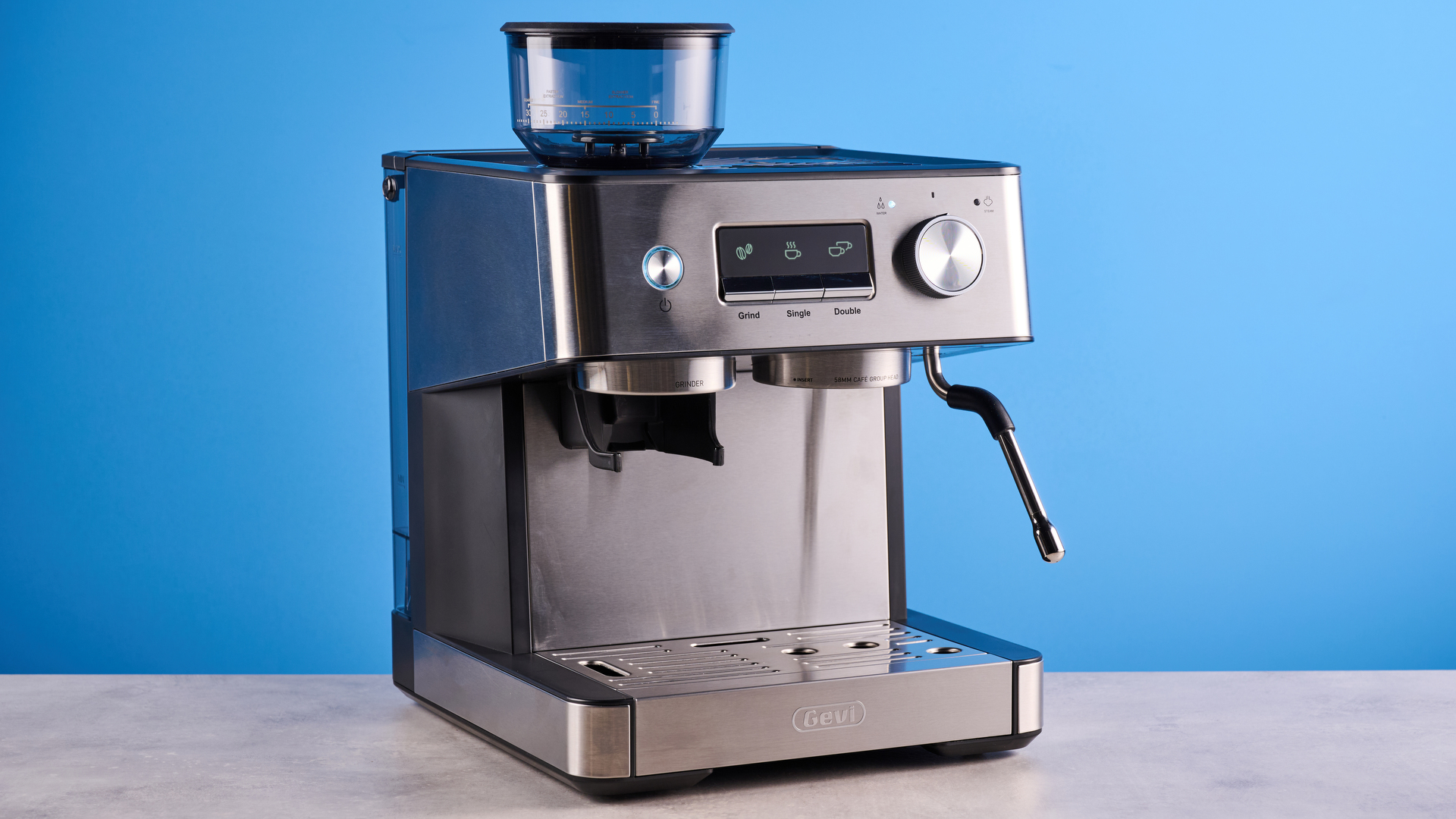
Recently, I tested the $249 Casabrews Ultra, which has no grinder but is one of the cheapest larger espresso machines I’ve tested. Unfortunately, it suffers from the same problems as the Gevi — which I’ll get into soon — but of course I can’t ask for perfection from a cheap machine.
The De’Longhi La Specialista Opera, which is one of the best bean-to-cup espresso machines, is a massive $899. Similarly, the impressive Breville Barista range starts from the $749 Breville Barista Express. In comparison, the Gevi option’s $349 price tag is practically a steal. However, some sacrifices have naturally been made to hit that low price point.
Get instant access to breaking news, the hottest reviews, great deals and helpful tips.
Gevi Espresso Machine with Grinder review: Design
As this is a $349 machine, I didn’t have high hopes for its appearance and build. Unfortunately, the Gevi Espresso Machine with Grinder looks — and feels — pretty cheap, but I suppose that’s because it is. A machine can’t have everything, and some of the cost-cutting measures have been implemented in its design and construction. The top feels overly plasticky and the water tank lid is finicky.
Even so, it’s not plasticky or falling apart. It simply feels flimsy and looks a bit cheap. If that’s something you’re willing to look past (and remember: this will be out on the counter 24/7), then it’s a worthy sacrifice.
On the front of the machine is a rectangular black screen with a ‘grind’ bean icon and a single and double cup ‘shot’ icon. Each icon has corresponding buttons to control grinding or extraction. On the right side of the front facade is the steam dial.
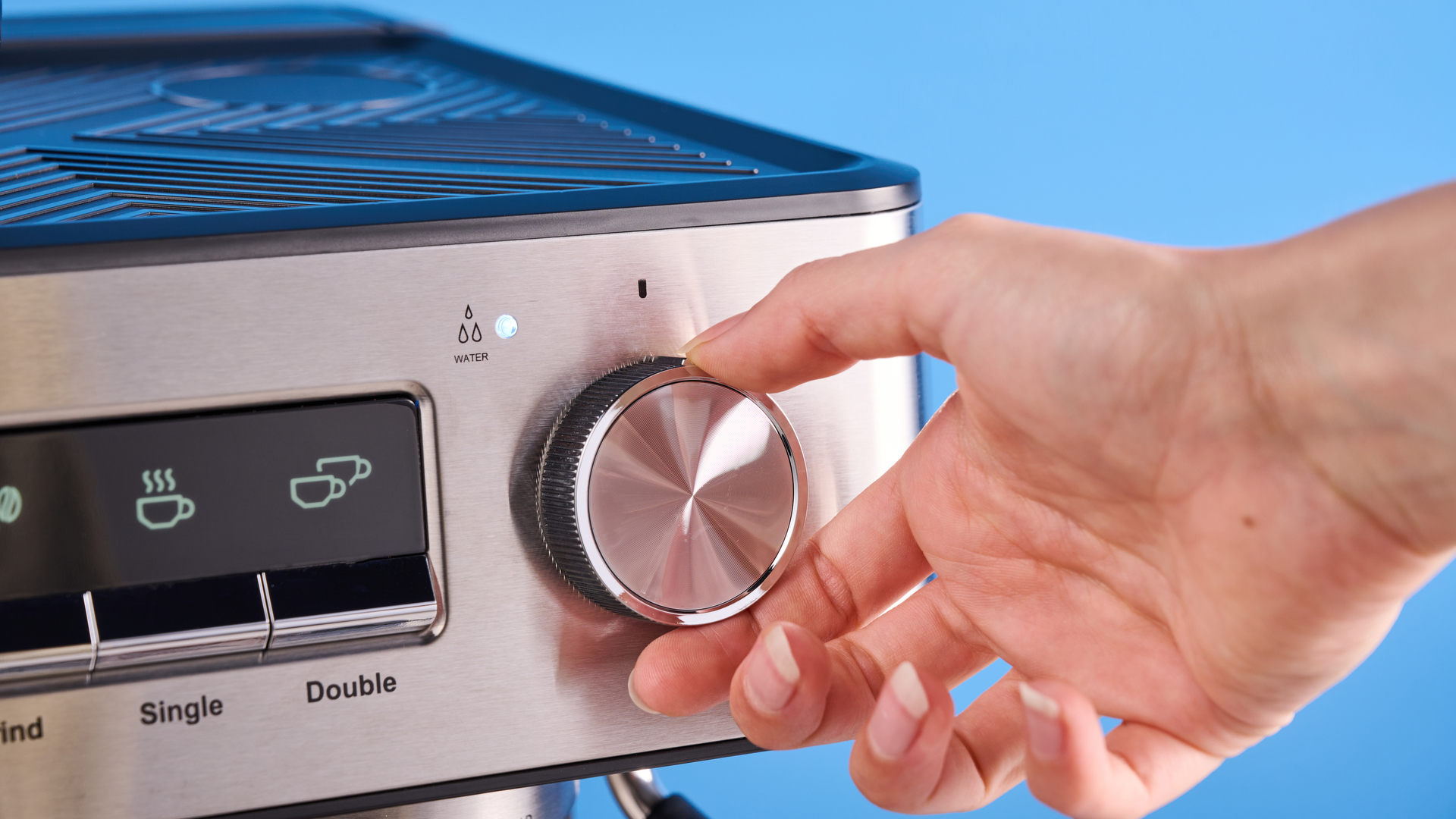
I understand why some home espresso machines have dials instead of buttons — it’s almost certainly to make the machine feel fancier or more hands-on — but I think it’s more of a hindrance than a help on the Gevi machine.
I think a button would make much more sense: it would be less obtrusive and easier to control for a beginner. Press button: steam appear. Press button again: steam disappear. It just makes more sense for these beginner-orientated machines.
I need to address some Amazon reviews in this section. Some Amazon reviewers have claimed the machine doesn’t come with “naked or bottomless portafilters” as a negative. No, the machine doesn’t come with naked or bottomless portafilters, but neither do $1,000 Brevilles.
I also don’t think people who know what naked/bottomless portafilters are fall into the target audience of this machine.
Another review claims the grinder lid doesn’t fit on the machine. This is simply not true. It fits nicely and doesn’t come loose.
Gevi Espresso Machine with Grinder review: Grinder
Now, I know that espresso machines with built-in grinders have inferior grinders, and that’s just a fact of life. I also know that most decent grinders start from $349, so an espresso machine + grinder at this price point doesn’t bode well for the quality of said grinder.
However, I was really pleasantly surprised. No, of course this grinder isn’t of the same quality as the $300 Comandante C40 MK4 or $649 Eureka Mignon Specialita, but it’s also technically… free? All things considered. The grinder has 30 adjustment steps, which is nice to see on a budget machine.
Some Amazon reviews claim there are no “grinder settings”, but I can assure you this is not the case. There are grinder settings — 30, in fact.
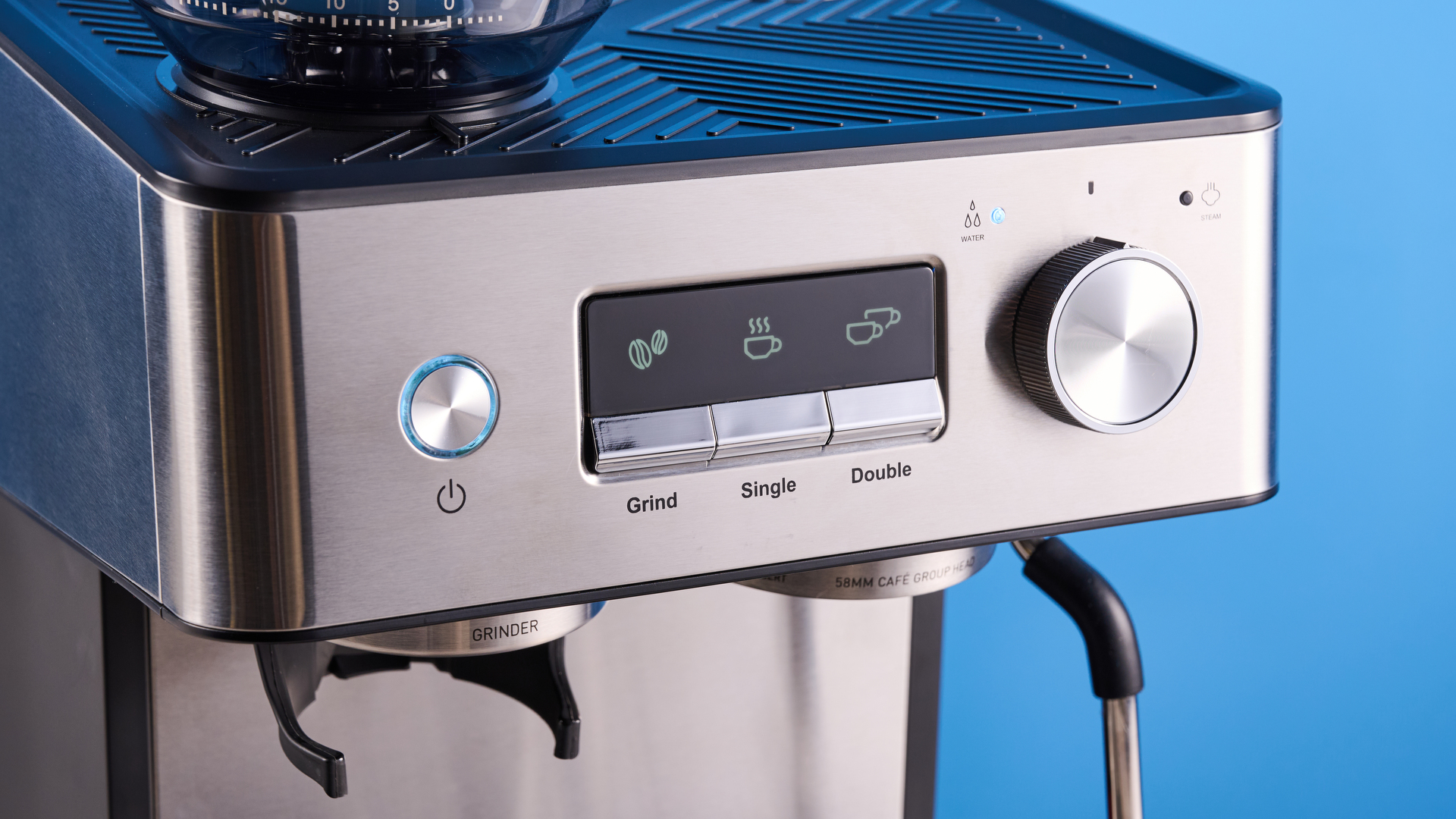
There are only two major annoyances: 1) the grinder heats up a little, so my beans came out slightly warm to the touch during testing; and 2) actually getting the grinder to grind. Supposedly, you have to press the grinder button twice to grind for a double shot, but this only ground 14g.
The single shot function also ground 14g. If you’ve got a coffee scale, it’s easy to measure out the desired dose, though. For just $349, I found this error easy to overlook.
On the whole, the grinder doesn’t clump, is fast, and helps make tasty espresso. Of course it won’t impress coffee enthusiasts, but then again, Gevi doesn’t make machines for espresso enthusiasts, so no love lost there.
Gevi Espresso Machine with Grinder review: Espresso
Before drinking any beverages prepared on the Gevi Espresso Machine with Grinder, I ran two water tanks’ worth of water through the machine and the steam wand. This is to remove any nasty metallic or plastic taste from the manufacturing. I would recommend you do this to any new machine too.
Gevi says the machine has 20-bar pressure and a PID controller, which is great for a cheap espresso machine. I found my espresso came out at reliable, controlled temperatures.
After grinding my beans to number 5 on Gevi’s grinder, I dosed 18g of coffee into the single-walled double-shot portafilter basket. I had to measure this with my Fellow Tally Pro scale (one of the best coffee scales) as I didn’t trust the dose on the grinder.
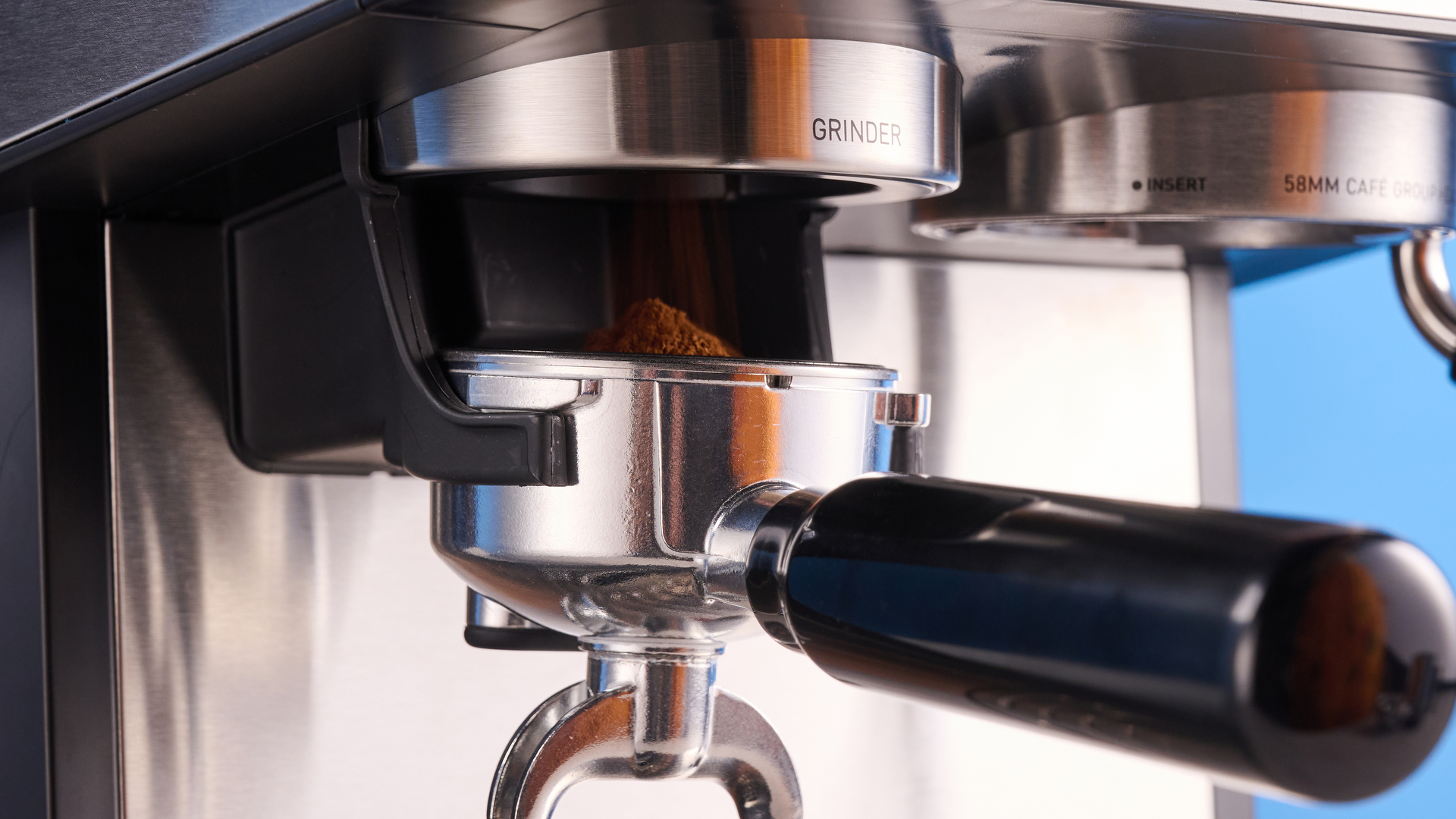
I then extracted this by pressing the ‘double shot’ button on the front of the machine. I stopped extraction at 36g — again using my scale. The default shot volume dosed 58g during my preceding tests, which resulted in a bitter yet watery shot.
You can easily calibrate this shot volume by holding down the respective shot button until it flashes, then pressing the button again to stop it. I’m happy to manually start and stop extraction with the help of my coffee scale, though.
I will note that the Gevi machine uses 58mm portafilters, which is the most common size, and the commercial standard. This larger diameter means the portafilter itself is shallower, which helps ensure a more even flow of water. This is great to see on a cheaper machine.
There are also a wider array of aftermarket accessories available for 58mm portafilters than the smaller 54mm portafilters used on Breville machines like the $599 Breville Bambino Plus — our favorite entry-level machine.
Anyway, here’s a photograph of the espresso I made on the Gevi Espresso Machine with Grinder.
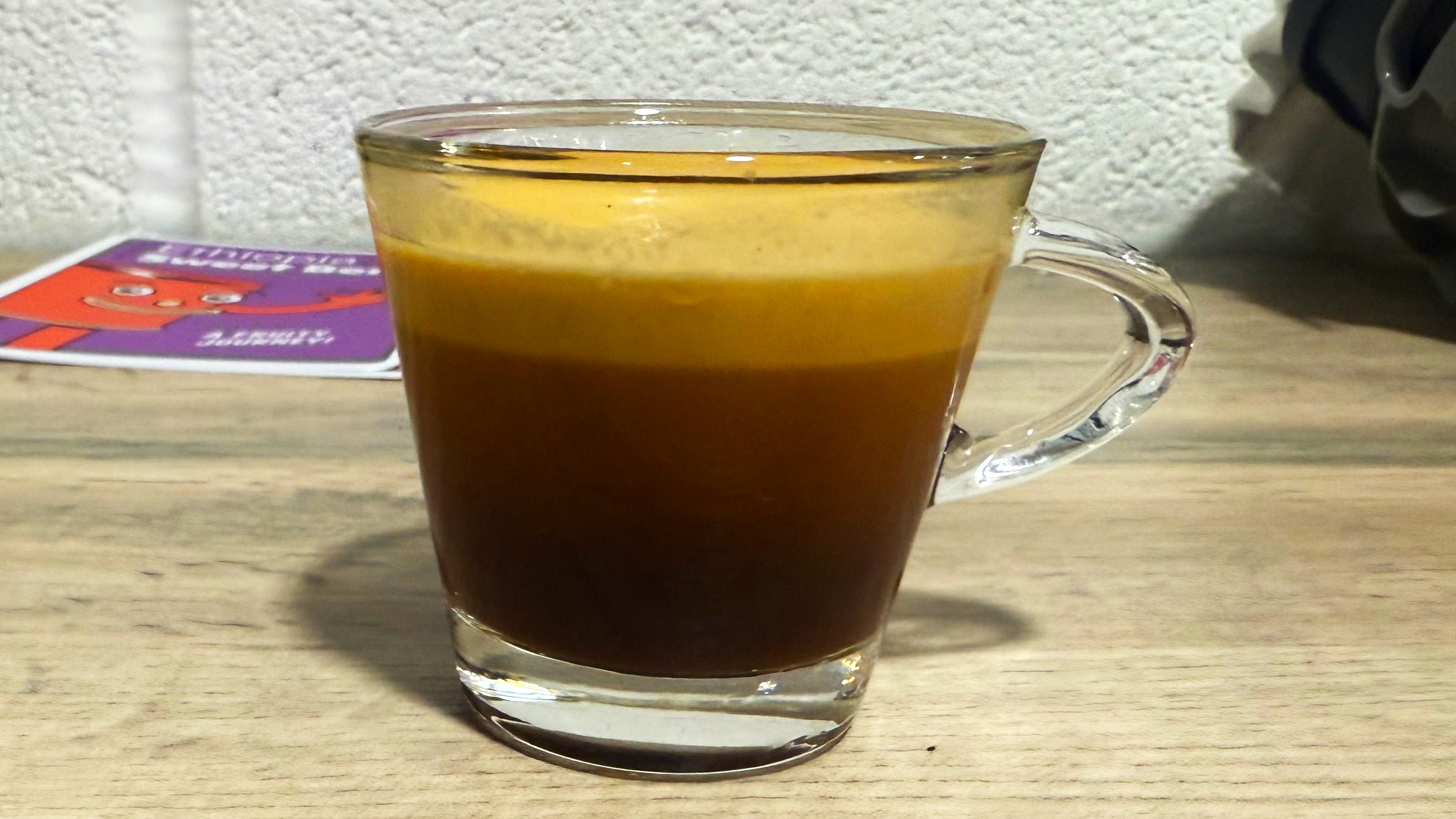
As you can see, the shot is quite dark, but the crema is thick. This is with single-walled portafilters, not the much-maligned pressurized baskets. An Amazon reviewer claimed the Gevi machine is incapable of making crema, but this is literally not true. The picture above is proof.
One Amazon reviewer claimed the espresso only came out at 125°F, but when I was testing, it extracted at way above that. My meat thermometer read 176°F, and I know meat thermometers aren't ideal to measure liquids, but I can assure you the espresso was steaming hot.
Overall, the espresso tasted fine. No, not particularly mind-blowing, but very good considering this is a $349 machine with a grinder. I would recommend this mostly for people who like flavored coffee, like pumpkin spice lattes and caramel macchiatos. If you’re a casual or beginner home barista, this machine will impress you.
Until you use the steam wand…
Gevi Espresso Machine with Grinder review: Milk
Seeing as the espresso extraction was generally quite impressive (for the money), I hoped the steam wand performance would be equally so. Unfortunately, the steam wand turned out to be my number one disappointment with this machine.
The steam wand takes at least 18 seconds to heat up after espresso — so long in fact that I started just steaming my milk first and continuing to swirl it to try and save the texture.
Similar to the Casabrews Ultra ($249), the Gevi Espresso Machine with Grinder suffers from a weak, spluttery, and overall disappointing steam wand. As there’s only one hole, it naturally has less power than the 4-holed steam wand of the Breville Bambino Plus.
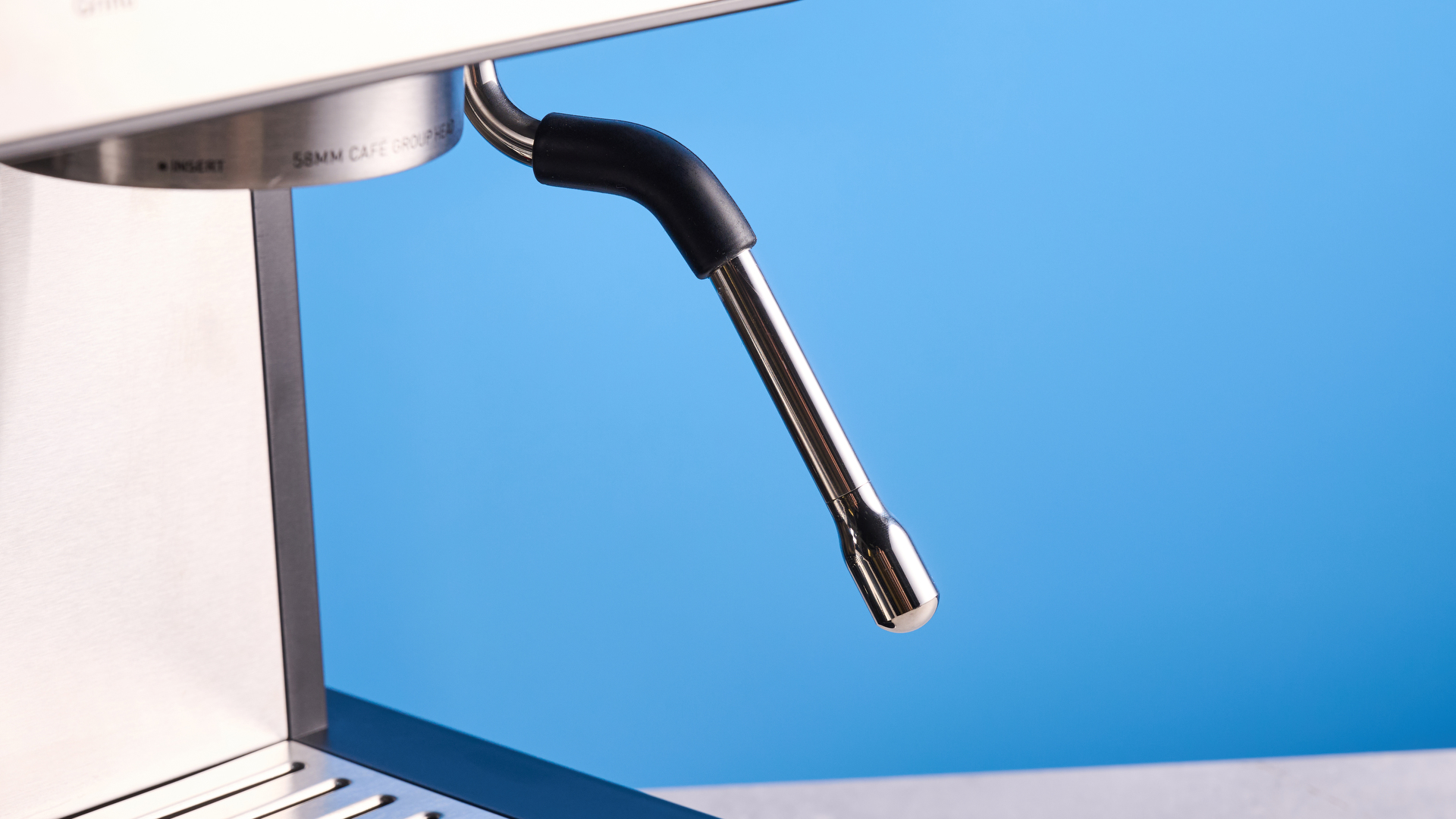
However, the Casabrews 5418Pro has an utterly fantastic one-holed steam wand for just $249. Even so, you’d be sacrificing decent espresso with this machine — it comes with only pressurized portafilters. The Gevi option makes more ‘technically’ correct espresso.
The Gevi Espresso Machine with Grinder steam wand is too weak to actually texturize the milk. Unfortunately, it kind of spluttered air into my milk, and I wasn’t able to whip up enough power to get the desired vortex in the milk.
Here’s a photo of the best drink I made on the Gevi.

As you can see, that’s a pretty shoddy milk quality. I was a barista for 3 ½ years, so I can assure you it’s not a skill issue. If I’ve got a somewhat decent steam wand, I can make great milk and achieve pretty latte art.
It also took ages to steam one pitcher of milk (no more than about 10oz). Like, 1 minute and 37 seconds. This just shows that the steam wand is pretty weak.
Unfortunately, I was unable to achieve the ideal melted ice cream texture of milk on the Gevi machine. I wouldn’t recommend this for people trying to perfect their milk aeration or trying to be the next latte artists going viral on TikTok.
If you mostly drink black coffee or iced lattes, though, or you simply don’t care about non-perfect milk texture, then the Gevi machine is an affordable way to get good espresso.
Gevi Espresso Machine with Grinder review: Storage & maintenance
As this is a pretty big machine — 13 inches wide and 16 inches high — you’ll need to clear a decent amount of space on your kitchen counter before purchasing.
Gevi provides a cleaning pin for the steam wand hole. Weirdly, there’s nothing else provided to clean, so you’ll need to buy that yourself. The water tank has no filter, so you’ll need to be on it with descaling.
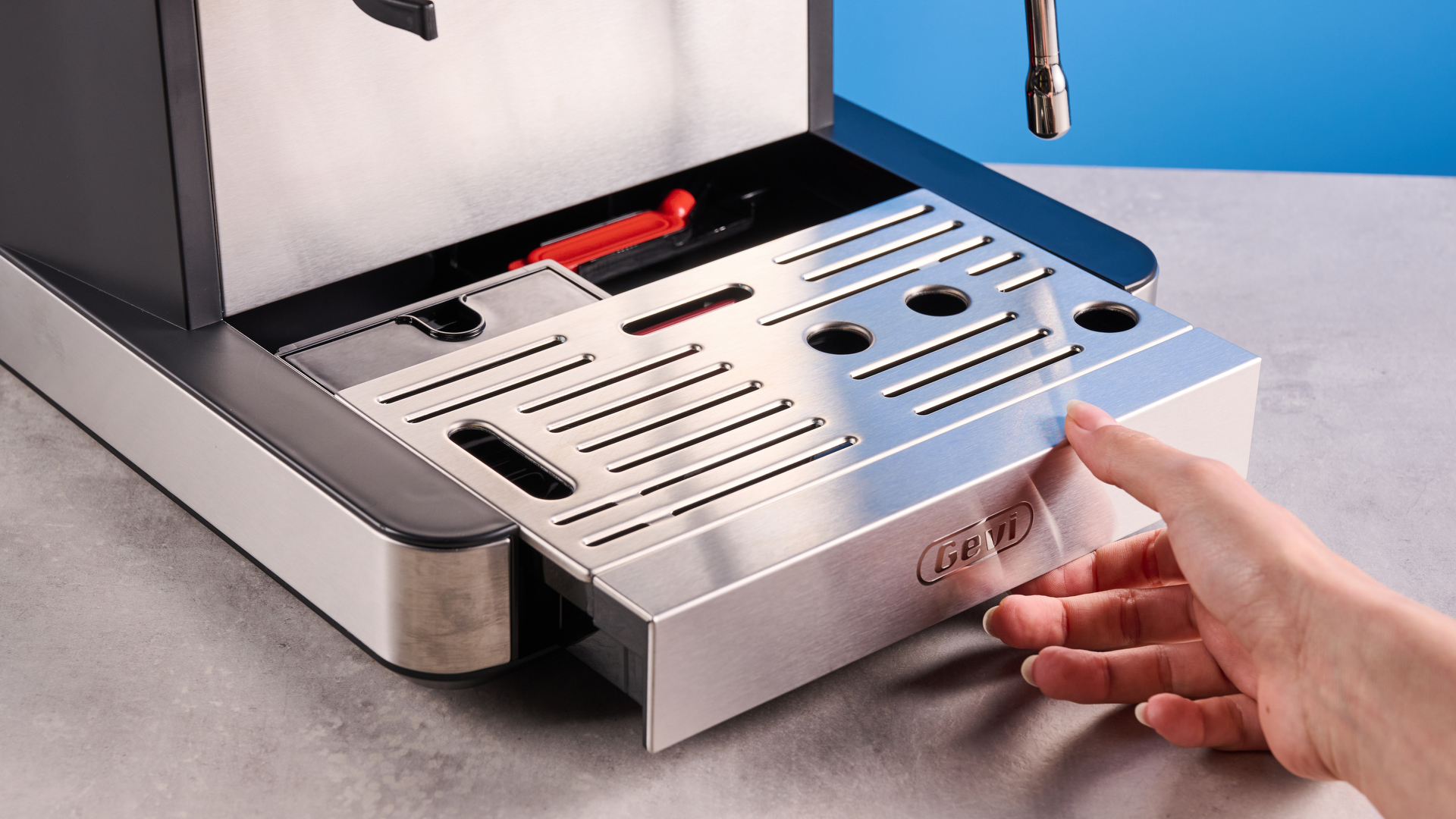
I would recommend descaling about every 6 weeks to 6 months, depending on your water hardness. I live in one of the hardest water locations in the U.K., so I need to descale my kitchen appliances every 6 weeks or so.
Gevi recommends cleaning the drip tray regularly — I would empty and clean mine at least every other day — and cleaning the portafilters regularly. At home, I clean my portafilter after every use in normal warm soapy water and clean my drip tray the same way.
Gevi offers a 12 month warranty, which is around the same as Breville and De’Longhi’s basic warranty.
Gevi Espresso Machine with Grinder review: How does it compare?
As I mentioned earlier, if you’ve got a small budget, there’s really very little competition. The Gevi Espresso Machine with Grinder is just $349, which is literally hundreds of dollars cheaper than other machines from bigger brands. Obviously the Gevi option isn’t as good as those machines, but you get what you pay for, and I don’t think there’s anything inherently wrong with that.
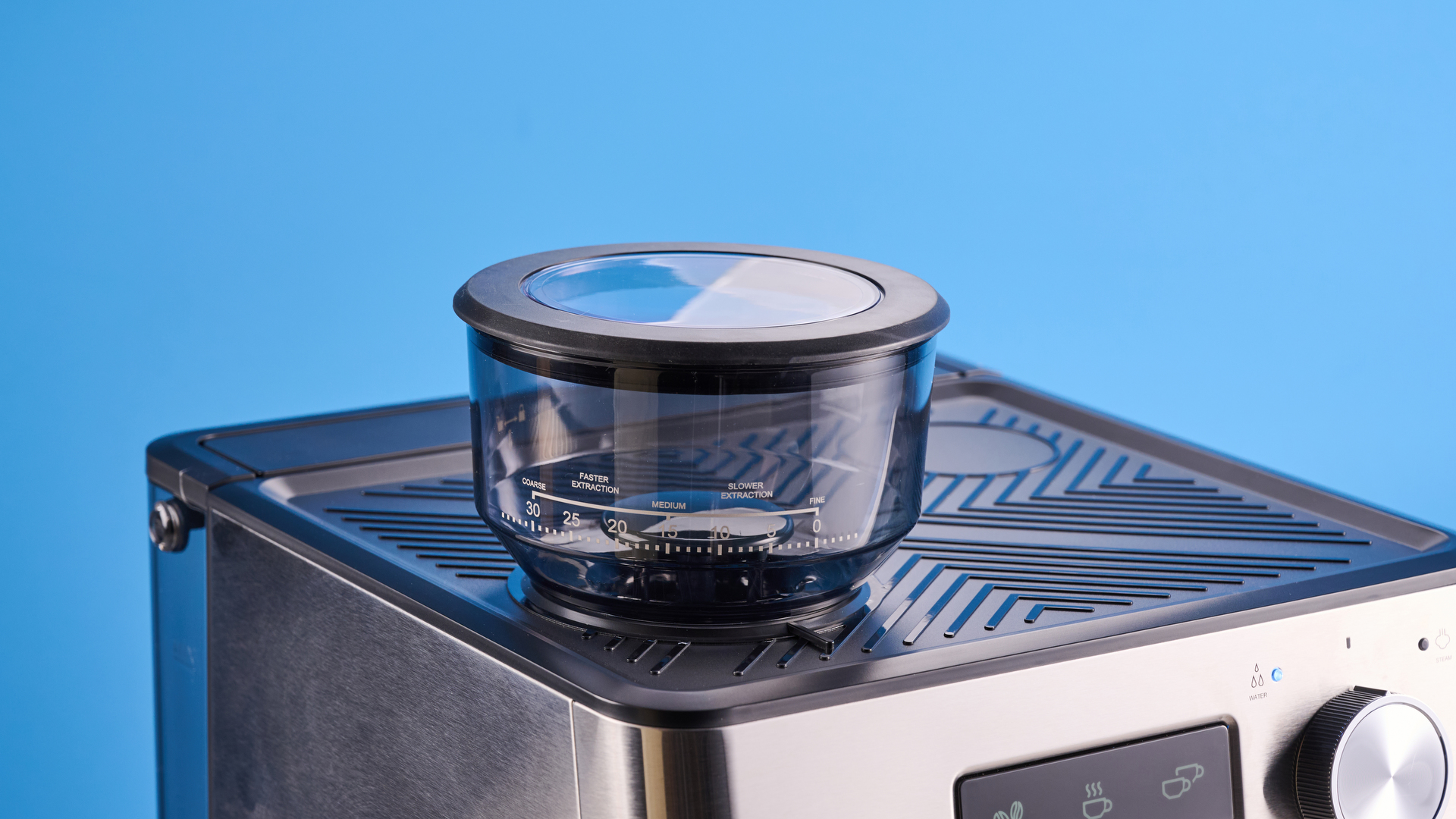
If you want an excellent espresso machine on a small budget, I’d recommend the De’Longhi Stilosa ($149), although it has no grinder, so you’d need to buy one of the best coffee grinders separately. These are often pricey, with beginner electric options like the Varia VS3 costing as much as $299. Alternatively, though, you can invest in a manual grinder for much cheaper, like the fantastic $60 1Zpresso Q-Air — so a good station can be set up cheaply.
If you need an espresso machine with a grinder and your budget is low, then the Gevi option kind of is the only machine for you. Just be wary that the steam wand isn’t great and that it looks quite cheap.
Gevi Espresso Machine with Grinder review: Verdict
As I said in the headline, this machine is utterly baffling. Just how? How is it so cheap? Right, yeah, it’s not without its imperfections (steam wand is pretty bad, takes ages to switch between espresso and milk), but that doesn’t necessarily excuse the price.
$349 is incomprehensibly low for a bean-to-cup espresso machine. Most grinders alone are $300, let alone getting an espresso machine on top of that. I’d expect this machine to be at least $450, and that’s cheap, too.
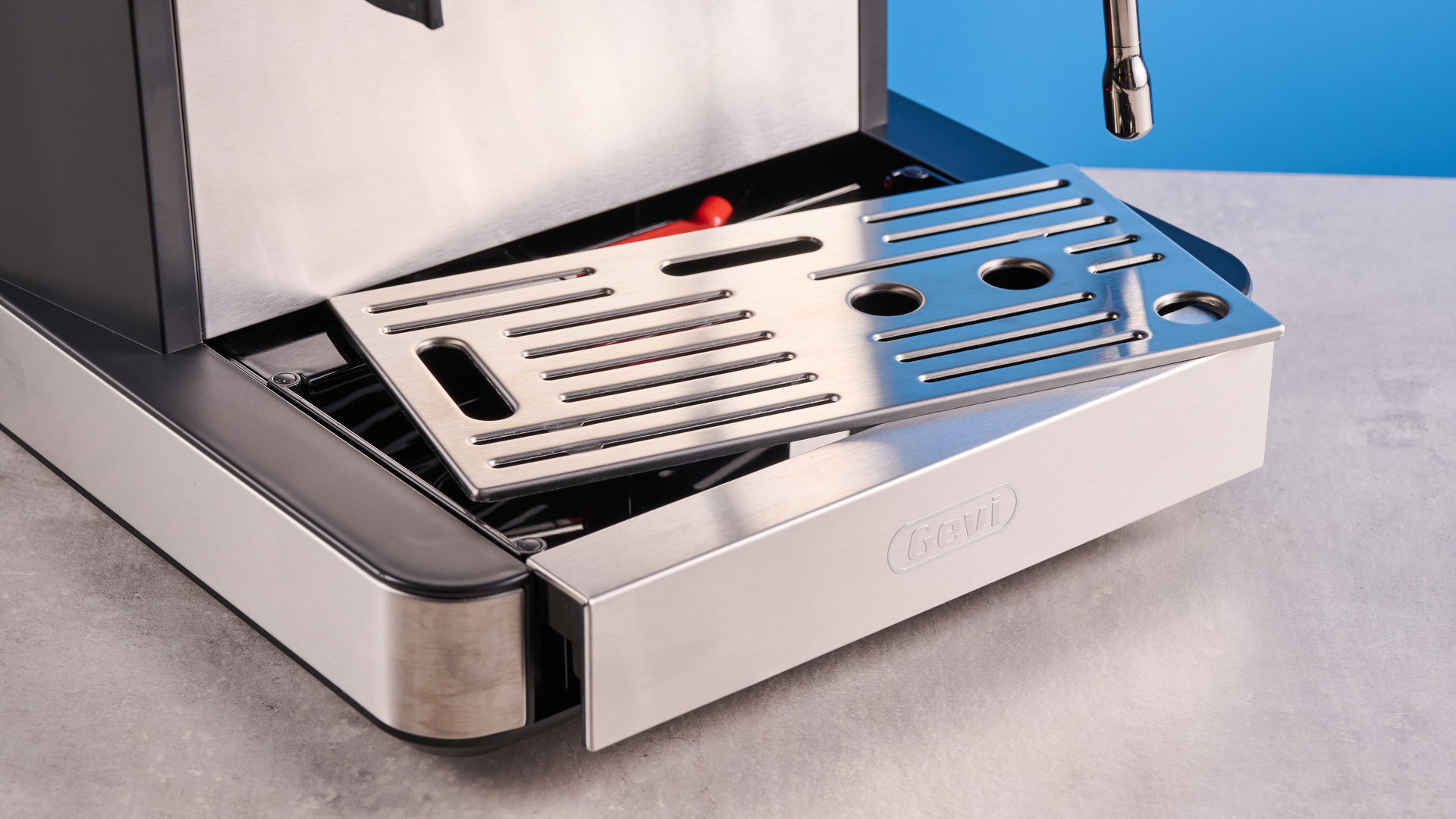
There’s little competition at this price, so if you really want an espresso machine with a grinder and you’ve got a small budget, then the Gevi Espresso Machine with Grinder is your only option. Me? I’d probably get the De’Longhi Stilosa and a separate grinder, though.

Erin Bashford is a senior writer at Tom's Guide, focusing on reviews. She has a Masters in Broadcast and Digital Journalism from the University of East Anglia. As an ex-barista, she knows her way around a coffee machine, and as a music lover, she's constantly chipping away at her dream of having a multi-room home sound system. In her spare time you can find her reading, practising yoga, writing, or stressing over today’s NYT Games.
You must confirm your public display name before commenting
Please logout and then login again, you will then be prompted to enter your display name.

